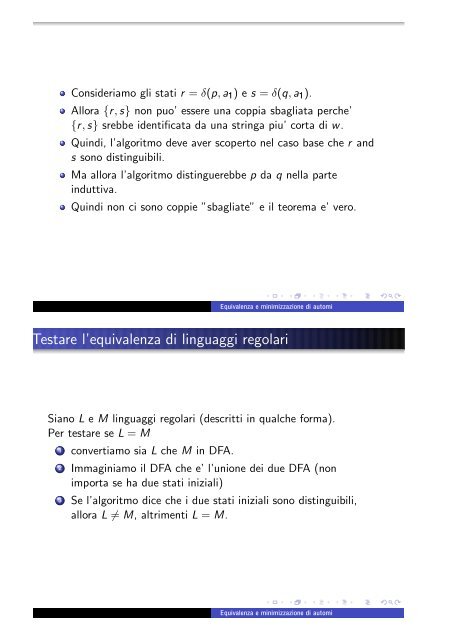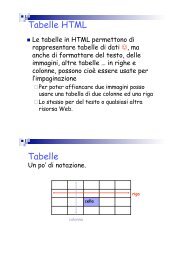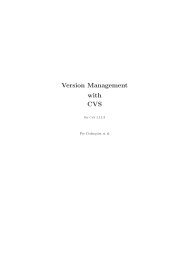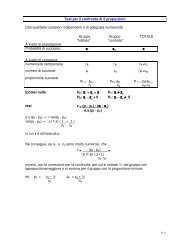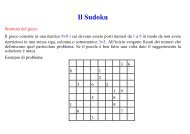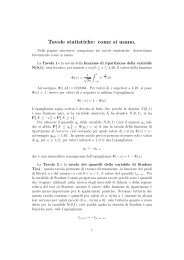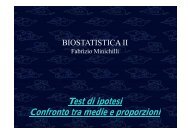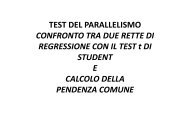Equivalenza e minimizzazione di automi Stati equivalenti
Equivalenza e minimizzazione di automi Stati equivalenti
Equivalenza e minimizzazione di automi Stati equivalenti
You also want an ePaper? Increase the reach of your titles
YUMPU automatically turns print PDFs into web optimized ePapers that Google loves.
Consideriamo gli stati r = δ(p, a1) es = δ(q, a1).<br />
Allora {r, s} non puo’ essere una coppia sbagliata perche’<br />
{r, s} srebbe identificata da una stringa piu’ corta <strong>di</strong> w.<br />
Quin<strong>di</strong>, l’algoritmo deve aver scoperto nel caso base che r and<br />
s sono <strong>di</strong>stinguibili.<br />
Ma allora l’algoritmo <strong>di</strong>stinguerebbe p da q nella parte<br />
induttiva.<br />
Quin<strong>di</strong> non ci sono coppie ”sbagliate” e il teorema e’ vero.<br />
<strong>Equivalenza</strong> e <strong>minimizzazione</strong> <strong>di</strong> <strong>automi</strong><br />
Testare l’equivalenza <strong>di</strong> linguaggi regolari<br />
Siano L e M linguaggi regolari (descritti in qualche forma).<br />
Per testare se L = M<br />
1 convertiamo sia L che M in DFA.<br />
2 Immaginiamo il DFA che e’ l’unione dei due DFA (non<br />
importa se ha due stati iniziali)<br />
3 Se l’algoritmo <strong>di</strong>ce che i due stati iniziali sono <strong>di</strong>stinguibili,<br />
allora L = M, altrimenti L = M.<br />
<strong>Equivalenza</strong> e <strong>minimizzazione</strong> <strong>di</strong> <strong>automi</strong>


